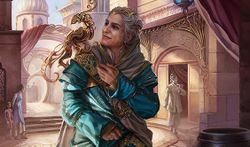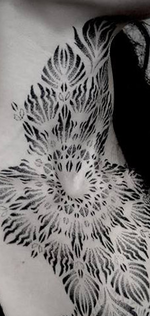The Eccia
| Memory 118 |
|---|
| Memory 118 Guide • Full Index • A B C D E F G H I J K L M N O P Q R S T U V W X Y Z |
The Eccia were an El-Aurian culture that lasted the length of El-Auria’s history. Descendants of a tribal structure in the planet’s southwestern hemisphere, they began as semi-nomadic tribes in the arid regions of the world.
Their religion was one of personal and cultural goals. They believed their founders, the Three, had once been mortal as they were, before each found a way to transcend beyond their mortal body. The clan leaders traced themselves as direct descendants of these figures: Tenera, Cantavi, and Venoja. They were strictly matriarchal, with a noble class of the most pureblooded women leading their clans. As history pressed on, these clans grew until some several million of the Eccia populated El-Auria.
Due to the philosophies supposedly set down by their Goddesses, the three clans (or Houses, as they would come to be known) often found themselves at odds, and even into relatively recent El-Aurian history had no issue solving these conflicts over land, resources and ideals through violence.
As the global culture began and the overall El-Aurian culture began to homogenize, the Eccia kept their long history of clan warfare and modernized it; pitched battles turned to blackmail, assassination and careful defamation. What they became famous for among the other El-Aurians was their most infamous trait: To kill the current head of the other Clan was absolutely forbidden. Even if they disagreed with their philosophies, all tribes agreed the Three were sacred and their bloodline should not be severed. What was not forbidden was killing the children of the Clan leader, and to do so was considered one of the most effective ways to attack the other clans. For this practice, they’ve gone down in general El-Aurian history as being babykillers.
By the assimilation of their homeworld, the Eccia maintained significant power, and the multi-stellar corporations run by them produced the majority of El-Aurian ships and technology. Their stamp can still be seen on much of what remains.
The Houses
The Houses - or clans - rose from the tribes who followed the Three, each choosing to follow the creed of one of the Three. Tracing their clan leader's lineage back to the Goddesses, the Eccia believed their leaders to be the literal blood of gods, and that through the paths taught by the Three, they too could one day transcend to a higher level of existence.
The words used to describe each of the Three - Silence, Speech, and Song - were taken quite literally, with each group having a fully described Path given in each format. These were closely guarded secrets, the full version supposedly only known to each Clan leader. In theory, the path would be passed down when its tenets had been met.
Castes and Gender Roles
With a hierarchy based on bloodline, Eccians fell into places in society based on their blood purity; while marrying closer to the full bloodline helped with rising in the ranks, marrying outsiders was considered unwise. Despite this emphasis on blood, however, the lower castes practiced a society of open relationships, with marriage being an arrangement considered unusual. Most of the Eccia happily had multiple partners, and to be exclusive was considered unusual.
However, the Eccia contrasted the otherwise egalitarian society around them by being strictly, even fervently, matriarchal. With their leaders and gods all being female, men played a supportive role in their society, being seen as less suited to the roles of leadership than women. Mothers in particular played the major role in Eccian society, controlling their family. At the higher levels of Eccian society, the leaders frequently had multiple husbands, and unlike those in the lower castes, their husbands were bound to their wife and expected to remain monogamous to her.
Art and Culture
The Eccian approach to art was rather distinctive to them, a result of their long history as a separate culture. They had a particular emphasis on beauty; anything of worth ought to be beautiful, no matter its function. Robots, ships, architecture and music should strive to be as elaborate and artful as possible.
This often came at the cost of practicality, as some would see it; Eccian starships and robots often communicated and interacted musically, this method being maintained over millennia due to the pure art of it.
Clothing
It was traditional for each of the houses' fashion to be dominated by their colors. For the Venoja these were red, bronze and gold; for the Tenera they were blue, yellow and purple; and for the Cantavi they were white, black, and blue. Their clothing, technology, art and tattoos were dominated by variants on these colors.
With their native lands having been arid and dry in ancient times, the traditional Eccian forms of dress were lighter on fabric than those of their northern brethren, and often showed more skin. As a culture comfortable in its sexuality and eager to show off their extensive tattoos and jewelry, it was typical of Eccian clothing to have plunging necklines, bare shoulders and arms, and bared feet. An entirely bare chest was very common in casual clothing, regardless of gender.
Body Modification
One of the strongest Eccia traditions was body modification through extensive tattooing and piercings. As in many cultures, the sort of jewelry worn and the materials used acted as signals of status, wealth, or accomplishment. The tattoos and jewelry worn were generally split along gender lines, with women typically wearing elaborate earrings, necklaces, and jointed rings decorated with geometric shapes and gemstones. Men typically wore facial piercings, necklaces and bicep rings, the most common jewelery being piercings on the bridge of the nose.
For men, the types of metal and material used sent simple messages - silver and obsidian marked one as unmarried, while gold and white-gold marked them as married. In all genders, the more elaborate the piece, the higher in status they were - namely, within their family.
Tattoos were a careful set of signals, as well, their placement, size and form meant to mark accomplishments, major life markers, and social queues like sexual preference and - of course - house.
Technology
Eccia-created technology is rather distinctive from other El-Aurian tech, though the emphasis on light remains. Spearheaded by the Cantavi, their technology pushed the limits of their capabilities. They created cybernetics, robotics and starships that were the envy of the Delta quadrant; their shapes carved into art as well as being fully functional.
The most common feature of their technology was hard light - a form of light projection that gave it dimension and force, it could be formed into a myriad of shapes and purposes. By the end of the El-Aurian homeworld, it was used in everything from the latest weapons and ships to things as simple as jewelry and clothing.
Notes
- The Eccia content is non-canon, and was created for UFOP SB118.
- Image sources for this article include Drakengard (©Take Two Interactive), StarCraft (©Blizzard Entertainment) and Magic the Gathering (©Wizards of the Coast)





